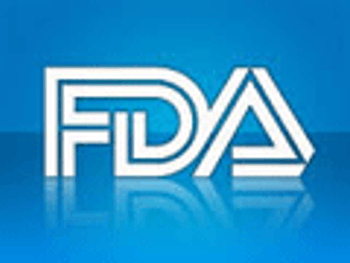
Analysis from multiple reports shows that Phase I clinical trials typically have a low rate of success. The lowest success rate occurs during Phase II of research, while those who make it to Phase III do not fare much better.
Jill Wechsler is ACT's Washington Correspondent

Analysis from multiple reports shows that Phase I clinical trials typically have a low rate of success. The lowest success rate occurs during Phase II of research, while those who make it to Phase III do not fare much better.


Sponsors and their contractors have faced challenges when ensuring that parties involved in global clinical trials adhere to rules and regulations regarding biomedical research. For an effective collaboration to take place, all parties must meet the expectations and accountabilities detailed in the trial contract.

The FDA’s breakthrough drug initiative is accelerating clinical development of new therapies. A recent analysis found that pre-market development time for breakthrough-designated drugs is 2.2 years shorter than for those without the designation.

FDA's new commissioner advocates for a "learning healthcare system" and less-complex clinical trial models that tap efficiencies in study design and enrollment.

Sponsors now take different approaches for “regulatory” trials to gain market registration, and “real world” studies to determine how a product should be used in practice, but these two worlds should not be separate.

Nonclinical models are limited, and clinical trials are challenging because, among many factors, is that pain is subjective, making it hard to define objective endpoints or to compare one drug to another.

Friends of Cancer Research is urging Congress to encourage FDA to adopt a new “disease-oriented” approach biomedical regulation, and for FDA to formulate a pilot to test this approach.

FDA intends to expand the use of Sentinel by leveraging its data for additional research, public health and quality improvement activities.

Agency is asking sponsors to propose demonstration projects that test the use of electronic health records and standards-based technology solutions. Ensuring trials assess new drugs in diverse patient populations is also a priority focus for FDA.

Califf tackles the many challenges to finding a balance between clinical trials large enough to assess all relevant populations and small enough to include deep data on each patient.

OND Director John Jenkins would like to see sponsors invest in more “me-better” drugs-as opposed to “me-too” medicines-to expand treatment options for patients and to boost competition among manufacturers.

Jill Wechsler on why the FDA program that encourages biopharma companies to develop new treatments for rare and neglected diseases has been in the spotlight recently.

These three areas will be at center of drug development discussions in the year ahead.

Robert Califf addresses questions about drug pricing at the Senate hearing to weigh his appointment to be the next commissioner of FDA.

Pharma and biotech companies are working with academics and health care organizations to establish systems for collecting and sharing the results of clinical trials, but they have far to go, according to a recent analysis of industry adherence to data transparency requirements. A report from the non-profit Bioethics International finds that for a group of new drugs approved by FDA in 2012, large pharma companies fell “below legal and ethical standards” for making public information from the relevant clinical trials.

This scenario seeks to limit animal and clinical studies to only those needed to eliminate residual uncertainty about product performance. Although innovators maintain that clinical trials still are needed to fully examine immunogenicity and other unique attributes of proteins and monoclonal antibodies, biosimilar developers look to extensive product characterization and to pharmacokinetic (PK) or pharmacodynamic (PD) studies to address these concerns.

Patient groups “are uniquely positioned��” to understand the impact of disease progression, which is central in determining how big and how long clinical trials should be.


Washington correspondent Jill Wechsler reports on Janet Woodcock's explanation to Congress last week on the FDA’s lengthy and deliberative process for issuing important policy advisories on biosimilar naming, labeling and interchangeability.

The White House nominates Robert Califf to head FDA, but will he be confirmed?

Will emerging drug cost assessment initiatives provide useful, valid information on total drug value?

One of the worrisome aspects of the U.S. Open Payments transparency program is that it may discourage doctors from serving as investigators in clinical studies. The two-year-old program requires public disclosure of payments by drug and medical device manufacturers to health care professionals (HCPs) and teaching hospitals for conducting clinical trials, as well as for marketing and consulting activities. But an anomaly in the program credits to the principal investigator (PI) heading up a research site the full payment for managing and carrying out the study at that site.

FDA needs to expand and empower its Office of Health & Constituent Affairs (OHCA) and its Patient Liaison Program to better coordinate interactions with individuals and physicians seeking expedited access to experimental therapies

The "Cures" bill and PDUFA IV are the latest measures pushing for more systematic inclusion of patient views into drug development.

The schedule is particularly tight this time because the user fee reauthorization process coincides directly with the presidential elections.

The budget increase for NIH brought strong support from the biomedical research community and medical societies across the board.

Ostroff noted FDA’s expanded international presence, as seen in its expanding overseas offices and in continued efforts to combat infectious disease around the world.

Conversely, social media discussions about study requirements and procedures may discourage participation and undermine study integrity, according to experts at last week’s Drug Information Association (DIA) annual meeting in Washington, D.C.

Agency concerned about how proposals in "Cures" bill will be crafted and implemented.